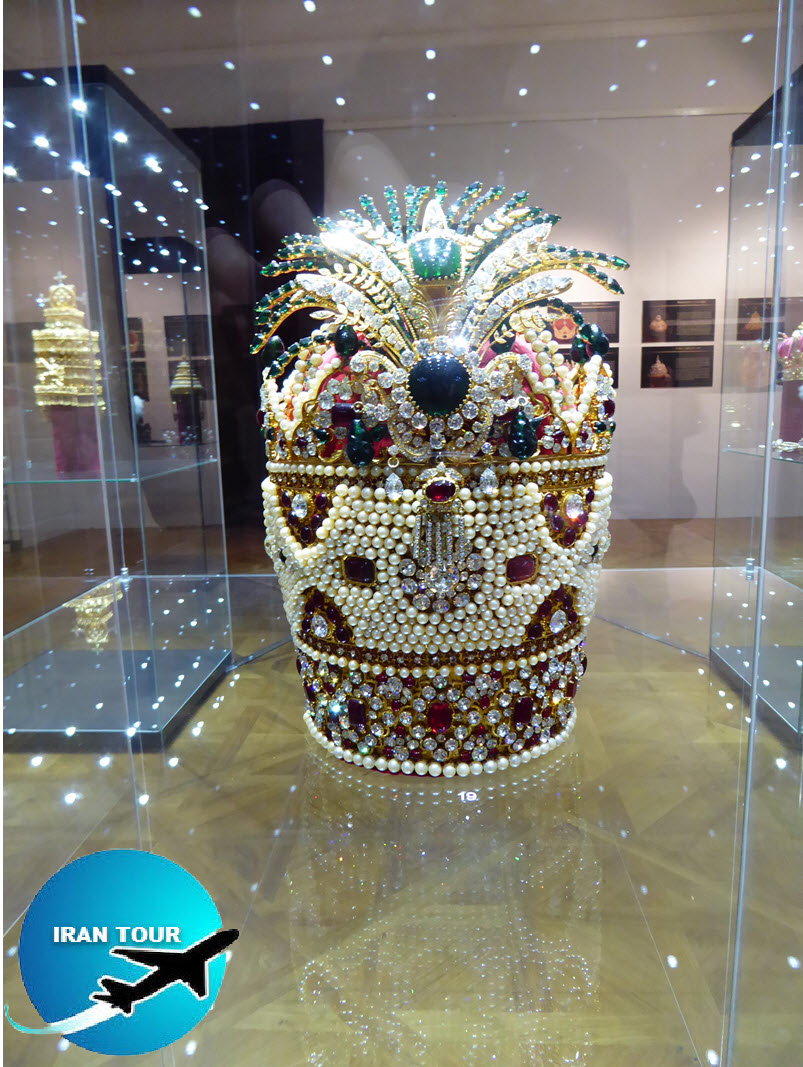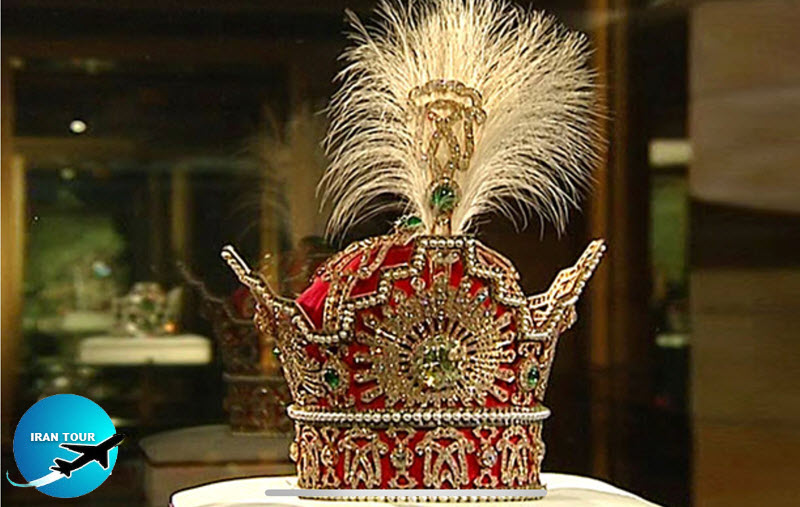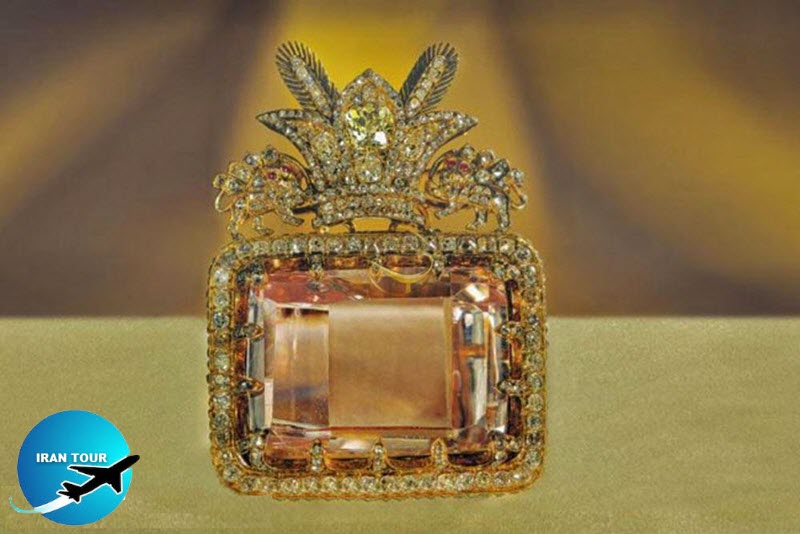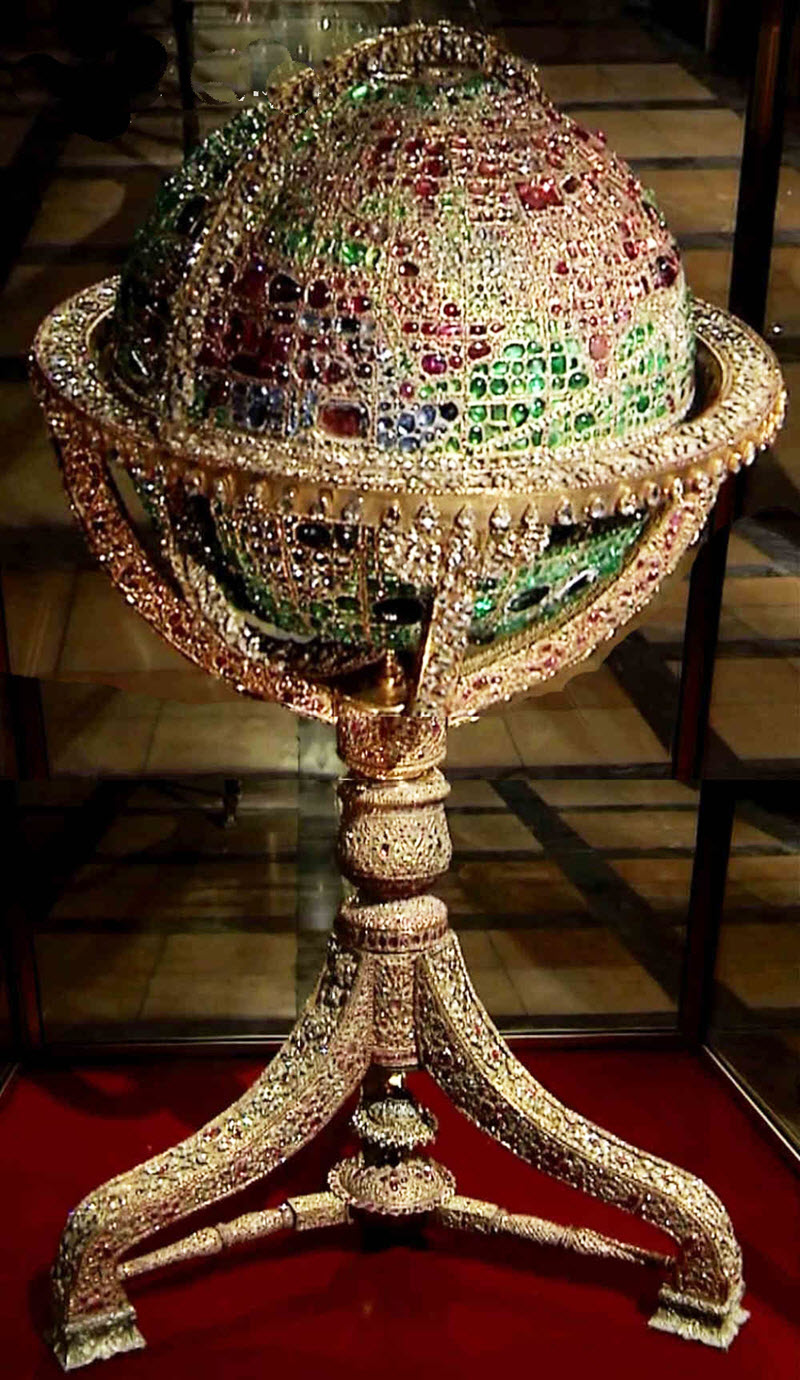Copyright 2020 - 2021 irantour.tours all right reserved
Designed by Behsazanhost
National Jewels Museum
Treasury of the National Jewels
The incomparable "Treasury of the National Jewels", which is open to the public, is a collection of the most expensive jewels of the world, collected over centuries. Every piece of this collection is a reflection of the tumultuous history of this great nation, and the result of the creativity and artistry of the residents of this land. Each piece recalls memories of bitter-sweet victories and defeats, of the pride and arrogance of rulers who were powerful or weak.
The value of the objects in the Treasury of National Jewels is not limited to their economic value, but is also a reflection of the creativity and taste of Iranian craftsmen and artists over the different eras of history, and represents the artistic and cultural heritage of the vast country of Iran. These jewels and rarities were decorations for the rulers during the past eras, and often showed the glory and extravagance of their courts, as well as their power and wealth. There is no information about the quality and quantity of treasuries before the Safavid period. It can be said that the recorded history of the Treasury of Jewels began with the Safavid monarchs.
National Jewels Museum
The National Jewels Museum (Crown Jewels, before the Revolution) is located in Bank Markazi Iran building Ferdowsi Ave. According to contemporary mineralogists and gemmologists, the treasury of the Museum of Jewel is the richest and most dazzling single collection of jewels in the world. Even for those who have never been able to summon up interest in precious stones, this collection in the closely
The invaluable treasury has a fascinating history that goes
The arrangement is changed from time to time but among the highlights are:
 |
1) The Kiani Crown dates to the reign of Fath Ali Shah Qajar (1797-1834), which was made as a coronation crown. It is thickly set with pearls and other gems. The final red stone is the Aurangzib spinel (120 carats). The crown weighs 4.5 kg.
 |
2) The 1925 jeweled Pahlavi Crown which was made from specially selected gems of the Treasury to be used at the coronations of Reza Shah (1925) and Mohammad Reza Shah (1967). The fact is that Reza Shah on his coronation was not inclined to use the Kiani Crown which belonged to the Qajar Kings. It was made by the highly reputed Caucasian jeweler Seraj od-Din, who had emigrated to Iran. The indented or step-shaped arches around the crown and the sunbursts on the four panels support the theory that the jeweler was inspired by the style of the crowns of the Sassanian Kings (226-651 AD).
 |
3) The Darya-ye Nour, Sea of Light, a 182-carat diamond, is the world's largest pink diamond measuring 25 mm wide, 10 mm thick, and 38 mm long. It bears the name of Fath Ali Shah on one side. It was one of the chief valuables surrendered by the Indian King to Nader Shah in 1739 upon his defeat by the latter. The diamond was worn as an armlet, a brooch, and sometimes as an aigrette. It has a frame surmounted by the Lion and Sunset with 457 diamonds and 4 rubies.
4) The noted Gika (aigrette) of Nader Shah, weighing 781 carats in all, which probably dates to the reign of Fath Ali Shah. It is thickly inlaid with diamonds and adorned with a big emerald in the center, which is one of the most beautiful emeralds amid the Regalia. The ornament is also enriched with 5 emerald drops, 2 shimmering on the top and 3 on the lower part. There are also flags, bayonets, and gun barrels on either side of the central emerald delicately set with diamonds. The colors of flags are marked with rubies, diamonds, and emeralds of a very light shade. A crescent in diamonds is also set in the center above the emerald.
 |
5) The extraordinary Globe of Jewels was completed in 1869 at the behest of Naser ad-Din Shah. It is, no doubt, the most precious globe ever made. Its frame, as well as the stand, are of fine gold, weighing 80 lb, and thickly set with 51,366 precious stones. The total weight of these gems alone amounts to 18,200 carats. The main incentive of the Qajar King in ordering the making of the globe was to transform the innumerable loose stones of the Treasury, kept for years in sealed leather bags, into an article of artistic nature and not easily liable to dissipation. See it for yourself and spot the various countries amid the flash of the stones!
This fabulous treasure includes some objects one might call usual' if one dared: enameled gold bowls and ewers, flasks of all sizes, vessels, chandeliers, snuff-boxes, nargilehs, and a beautiful silver water vessel, shaped like coconut and decorated with ruby and turquoise spirals. (The turquoise is very frequently used in Iran: extracted from the Khorasan deposits in the Mashhad region, it is a sort of national stone, almost commonplace here.) However, the oldest pieces date back to the Safavid period, but they hardly represent one-tenth of the treasures accumulated during three centuries by Sovereigns belonging to that dynasty. These treasures, plundered and dispersed during war and pillage, were partially recuperated toward the middle of the 18th century by Nader Shah, especially while he campaigned in India. During the following century, the Qajars were active in protecting and enlarging this treasure.
A brochure (in English and French) sold at the entrance of the Museum gives abundant details on the main origins of this treasure and on the history of the finest jewels.
- Details
- Category: Museums of Tehran